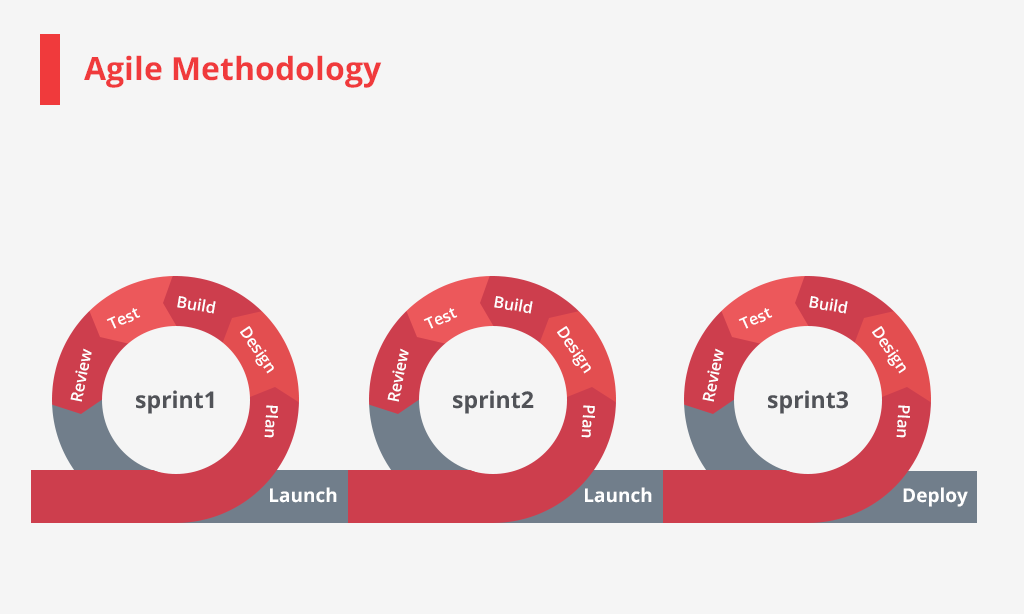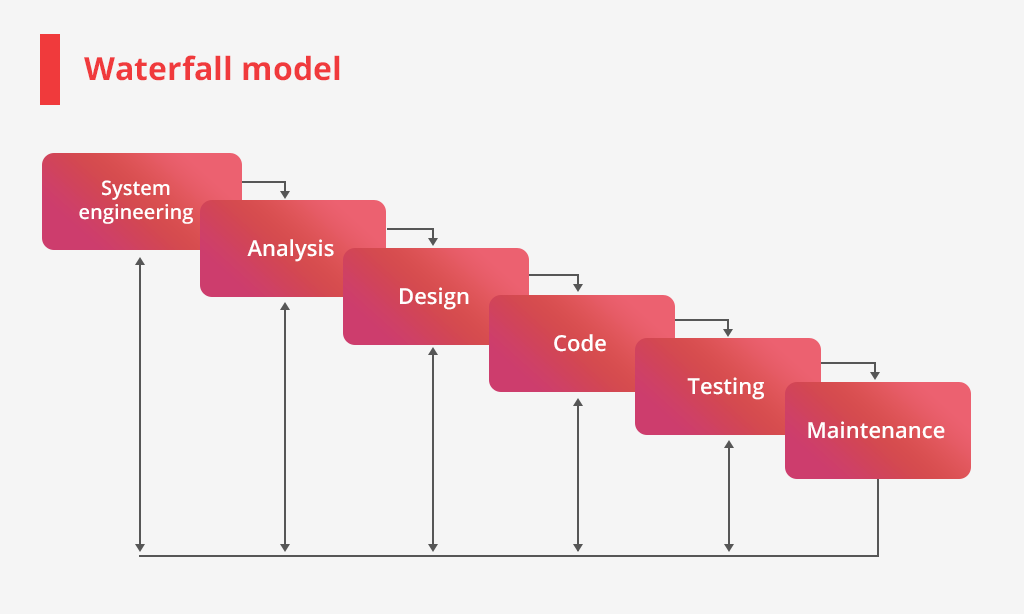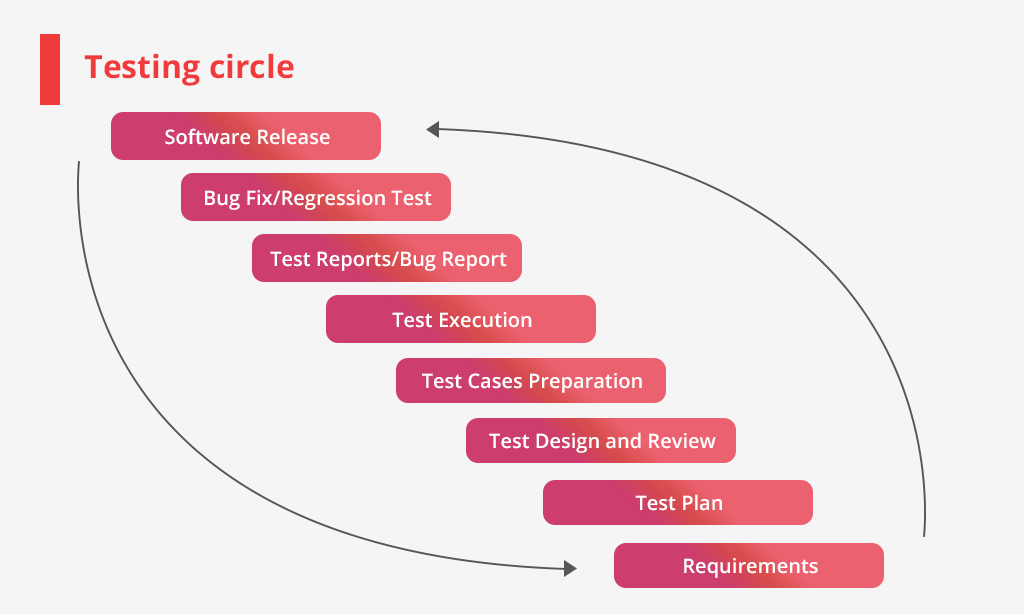It’s Better to Be Safe Than Sorry, or Why Quality Assurance Testing Matters to Your Business
Ariane 5 is a heavy-lift launch vehicle that should have been used to deliver payloads into low Earth orbit or geostationary transfer orbit. In 1996, the European Space Agency launched the rocket, but it exploded and cost the agency $500 million.
Why did it happen? After analyzing the situation, it was identified that the explosion was due to a software error. When the developers were working at Ariane 5, they used components from Ariane 4 but not check their compatibility.
Money was lost. The project failed. All because of the lacking profound software quality assurance.
Another situation took place in the summer of 1999. The British Passport Agency tried to computerize their passport processing system with new Siemens computers. Not only were they untested, but employees couldn’t figure out how to use them correctly.
This caused long lines in front of the agency, delays in a passport issuing, and huge financial losses. Again, no quality assurance testing resulted in a failure.
This blog post is devoted to the value of software quality assurance (QA) for any business, its place in the entire development cycle, and the effective ways of testing that will help polish your product to perfection.
What is QA Testing and What Happens If You Do Not Have It?
Quality assurance is the process of ensuring that the company provides error-free products or services to its customers. The objective is to deliver the final product smoothly and seamlessly by controlling all phases of the development process.
According to Statista, a quarter of the IT budget should be allocated to QA testing. It’s that important.

However, the above stories demonstrate that neglecting quality assurance testing has consequences beyond financial loss.

Difference Between Quality Assurance, Quality Control, and Testing
Quality assurance is often confused with testing and quality control. Despite being interrelated, these three concepts execute different tasks and have different purposes.
Quality Assurance vs Quality Control
The purpose of QA is to introduce quality criteria and set up the entire process. When it comes to quality control (QC), the aim is to ensure that the product fully corresponds to specifications and all requirements before the release.
QC has to do with the software before it goes live and is oriented toward verifying errors. QA deals with the entire process of software development. It is oriented toward the prevention of errors.
Quality Assurance vs Software Quality Testing
Compared to QC and QA, the ultimate goal of product testing is to uncover errors and bugs in the design and source code.
Test engineers have to assess all sides of the product, including security, execution, compatibility, intuitiveness, and ease-of-use before the release to avoid customer dissatisfaction and the loss of money.
The Place of Quality Assurance Testing in the Entire Software Development Lifecycle
Quality assurance testing can be performed in different ways based on the software development methodology used by the company. There are two major approaches: Agile and Waterfall, and the QA process is different for each of them.

Agile Model
When you develop software based on the Agile model, you break all operations into sprints − small iterations. This approach allows quality testers to act in parallel with other team members to catch bugs as soon as they pop up.
This methodology allows companies to save money because QA engineers can detect and fix bugs during the early phases of development. The earlier the error is identified, the less it costs to fix.

Waterfall Model
This a classic software development model that includes 6 stages: system engineering, analysis, design, code writing, quality assurance software testing, and maintenance.

Quality testers begin by finding bugs just before the product goes live. As compared to Agile, where bugs are revealed as soon as possible, Waterfall methodology means that the errors and bugs will be found at the end of the entire process. Fixing them may be wasteful for the company.
Software Quality Control Testing Principles
To utilize the time allocated for quality assurance wisely, engineers must adhere to the key software testing principles and stick to them all the time. These principles become guidelines that help organize the overall process and make it more effective. They are the following:
- Exhaustive testing is not possible. Testing has limits. QA engineers can only perform a precise amount of scenarios. It’s impossible to check absolutely everything.
- Testing shows the presence of defects. According to this principle, the number of bugs cannot be eliminated, only reduced. The engineer’s goal is to cause the product to crash to identify weak points.
- Early testing. It has already been mentioned that the earlier you start the QC process, the less money you will lose.

- Pesticide paradox. Using identical test cases multiple times will not help to catch new bugs in the software. Cases must be occasionally modified.
- Defect clustering. This principle is based on the Pareto Analysis, also known as the 20/80 rule. It means that the testers find 80% of errors after screening only 20% of the entire functionality.
- Testing is context-dependent. The key idea here is that various QC types should be applied to various types of software. For instance, testing medical software will significantly differ from testing e-commerce software.
- Absence of errors fallacy. If, in the end, you provide the client with a product that does not suit their requirements but is bugs-free, it does not mean you have succeeded.
Common Quality Assurance Testing Flow
Not only should you understand “What is QA testing?” and how it helps your business, but you should also know all of its stages to achieve the best results for your product.
There are generally 7 stages:
- Requirements. Each project has certain requirements set by a client or product owner. Many meetings take place to structure all these requirements and correctly understand them to avoid misunderstandings during both development and testing. Usually, at this stage, the specification is created.
- QA test plan. Once the requirements are discussed and documented, the plan has to be written. This in-depth document should include the following sections: brief project overview, the purpose of the document, tasks with objectives, features that must be checked, and time estimates.
- Preparation of test cases. These are the accurate descriptions of actions that have to be executed to verify a certain application feature. Usually, a test case has three parts: actions (all steps) → actual result → expected result. When the actual result does not coincide with the expected one, the bug is detected.
- Test execution. This stage entails running QC tests prepared during the previous stage.
- Bug reporting. During this stage, all detected bugs have to be documented. A QA engineer has to report the error and assign a developer to fix it.
- Bug fixes. When a developer receives a bug report, they fix it and ask a tester to recheck the software area where the bug was found.
- Release. After all the stages have been successfully completed, the software can be released.
qa

If you think that developers can check the software by themselves, just imagine how much time and effort they need to follow all these steps. That is why it is so beneficial for your company to hire quality testers to be in charge of this process.
Read more about software testing life cycle (STLC) in our post “Boosting Your Software Testing Life Cycle”
PractiTest has discovered that a team of up to 5 QA specialists in a mid-size company can effectively execute quality assurance tasks.

Software QA Testing Types
No matter the type of product you develop, it should be checked thoroughly from different perspectives, taking into consideration all aspects of the software. Full-fledged testing involves two major QA types, functional and non-functional.
Functional testing includes the following sub-types:
- Unit testing entails checking each code module separately.
- Smoke aims to inspect that the most essential options work correctly.
- Integration is applied to check how individual units work together.
- Sanity involves a separate part of product functionality.
- White box means that the QA specialist has access to the inner structure of the unit that is being checked.
- Black box is the exact opposite of the white box one. Here, the specialist does not have access to the inner structure.
- User acceptance is the ultimate stage where actual users check whether the software works as expected.
- Regression inspects whether the updates to the product have not affected the rest of the features.
All these types can be executed manually.
Non-functional quality assurance software testing has the following sub-types:
- Performance testing aims to determine how fast the program works under different loads.
- Volume testing helps determine how the software works with a huge volume of data.
- Stress testing identifies how stable the software is. It is also called torture testing.
- Security testing is required to monitor if there are defects in the security of the program.
- Installation type speaks for itself. Quality engineers check whether the product can be installed smoothly.
- Penetration testing helps find security vulnerabilities by modeling the behavior of external fraudsters who want to penetrate the system.
- Compatibility testing aims to see if the software runs normally on different devices and in combination with different operating systems.
These non-functional types require automation tools to be effectively executed.
Manual and Automation Software Testing
Despite the fact that manual testing is time-consuming and less accurate than automated testing, it is beneficial in improving the user experience and to make the product user-friendly.
While there are no questions left regarding “What is QA testing?” and which type is better, let’s go straight to the point and figure out when and why each is used.
A manual approach can be applied to the following scenarios:
- Usability testing. Human observation is the most critical factor when screening whether the product fulfills the needs of the end users. This is why real people have to check the system to measure how convenient it will be for real customers.
- Exploratory testing is performed not in accordance with the previously written scenario, which is why automated testing does not work in this case. The poor specifications require engineers to inspect the software on the fly.
- Ad-hoc testing has no scenario at all. It is based on the engineer’s intuition and can help find the most unpredictable bugs.
Automation is applied to the following cases:
- Performance testing and repeated execution require the simulation of the actions of hundreds of users. It is impossible to perform this manually, which is why automated testing is used.
- Regression testing. Due to the frequent modifications in the code, it is hard to manually catch all errors. To perform regression screening in a timely manner, engineers use automation tools.
Oleg adds that “manual testing is more effective at the beginning of the project − when it has not so big functionality. However, when it is growing and more features are being developed, automation should come into play.”
Predictions for Software Quality Assurance Development
While artificial intelligence and machine learning have started to penetrate almost all domains, it is apparent that, soon, QA will also become smarter.

Introduction of these technologies will help to improve the entire quality assurance process.
First of all, they will enable faster testing. ML and AI-powered programs will help quality assurance engineers generate more test cases and run them at the right time. Running tests multiple times will teach the system. This will help identify pattern deviations in the software.
User interface testing will be taken to the next level. Thanks to image recognition technology, it will be easier to recognize interface controls of various size and form. AI will make it possible to determine image patterns by breaking down the UI of the product to the level of pixels.
A single modification in the program may lead to the failure in testing through UFT or Selenium. The implementation of AI/ML components will teach the system to adapt to different alterations in real time. As a result, tests will become much easier to maintain.
On the market, some smart quality control tools already exist. For example:
- Testim creates, runs, and supports autotests.
- Mabl is aimed at regression testing with no access to the code.
- Perfecto inspects mobile applications using AI analytics to report errors.
- Applitools enables mobile and web visual testing.
The future of QA is all about artificial intelligence and machine learning. More and more automation tools will be created to make software quality engineers not only necessary at the companies, but also more productive and effective.
Quality Assurance is a Ticket to Success, Agree?
No matter how complex and time-consuming the software development process is, quality assurance has a place. To prevent consequences, keep the following in mind:
- The sooner you start testing, the less money you lose.
- The quality control process should be well-organized. Your team should form a strategy, generate multiple test cases, and update them occasionally.
- Both manual and automated tools should be applied to make QA more effective.
- Emerging innovative technologies such as AI and ML should not be left aside.\
After all, the value of QA is plain to see. It helps your company to save money, maintain great user experience, prevent product failures, enhance user satisfaction, and inspire their confidence.
